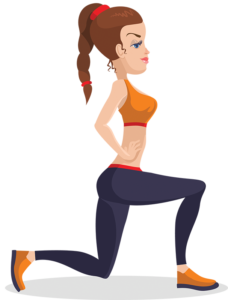High-intensity interval training will blast body fat and boost your overall fitness in a fraction of the time it takes to run 5 miles or complete a spin class. But you have to be ready to push yourself—hard.
Lisa Ojert, group fitness instructor at Central Bucks Family YMCA in Doylestown, Pa., has been teaching high-intensity interval training (HIIT) classes for more than 4 years and loves the variety of exercises that the format allows. Her set routines frequently include a mixture of burpees, box jumps, and mountain climbers, and she’s used the training technique with everything from bootcamp classes to tough mudder training. “When done right, HIIT workouts go so quickly that you don’t ever get bored,” she says. The key is to take a conservative approach to each workout and gradually add more per session. “You can always rest more if you need to,” she says.
Ojert was introduced to HIIT through Tabata, one of the most popular forms of HIIT. Developed in the 1970s for Japanese Olympic speed skaters, Tabata focuses on short sets that redline your heart rate for a short period of time and offer brief intervals in between. “For Tabata, you perform a high-intensity exercise for 20 seconds, and then follow with 10 seconds of rest,” says Ojert. “Repeat this eight times to complete a 4-minute Tabata round.”
Given Tabata’s intensity, Ojert doesn’t recommend it for beginners and says that anyone interested in HIIT should first establish a base level of fitness that includes 30 minutes of aerobic exercise at least 3 days a week.
Ojert recommends using plyometric drills to form the core of your HIIT workout. “I often combine strength moves with plyometric moves: 1 minute of dumbbell squats, followed by 30 seconds of squat jumps, followed by 15-20 seconds of recovery,” she says. “Then maybe 1 minute of pushups, followed by 30 seconds of burpees, followed by 15-20 seconds of recovery, and so on.” Then repeat the set for 30 minutes. NOTE: Beginners can reduce the jumping by just pushing up onto the balls of their feet so they never leave the ground.

Burpees
Stand with your feet hip-width apart and your arms by your sides. Next, squat down, and place your hands on the floor in front of you. Then kick your legs back, landing in plank position and lowering your chest to the floor. Push your chest back up to complete a full push-up, and then bring your legs back into a squat position. Then jump up, and raise both hands over your head.
Plyometric Lunge
Stand with your right foot in front of you and your left foot behind you. Keeping your torso upright, lower yourself until your left knee is bent. Exhale and jump straight up, bringing your left leg forward and your right leg back. Land with both knees bent and your weight on the heel of your left foot (front) and the ball of your right foot (back).
Air Jacks
Stand with feet together and arms down by your sides. Circle your arms in, up, and out while jumping your feet wide apart. Try to get into an X position while you’re in the air. Then circle your arms back in and down as you jump again and land with feet together and arms down.
Squat jumps
Stand with your feet together. Lower into a squat, with your arms behind you. Then jump up, swinging your arms over your head. Land in a squat position with your feet hip-width apart, and swing your arms back again.
Advanced option
The Tabata workout is intense, combining a plyo move with a core move for 8 reps. Start by doing squat jumps for 20 seconds before resting for 10. Next, hold a plank position for 20 seconds and rest for 10. Eight reps should take 4 minutes.








